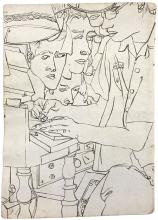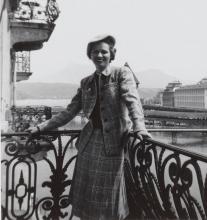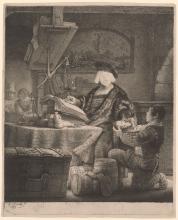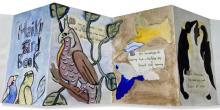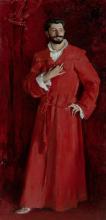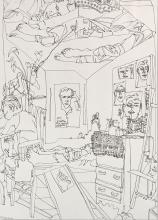Rick Barton: A Curatorial Serial, Part IV–Conclusion
Submitted by Rachel Federman on Fri, 07/10/2020 - 12:00amIn early 2018, I received the welcome news that UCLA Library Special Collections would consider lending drawings by Rick Barton to an exhibition at the Morgan. Moreover, more than 600 drawings that had not been located at the time of my visit were now available to view. My next opportunity to travel to Los Angeles would not arrive until October of that year. But in the interim, I made a number of crucial discoveries.

